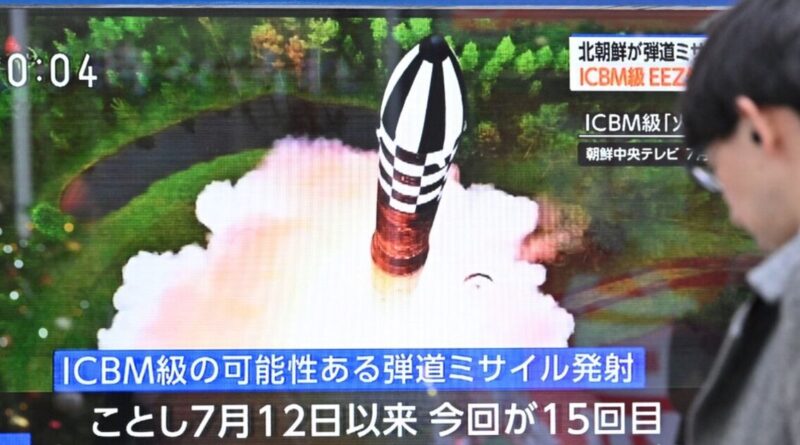North Korea fires banned ballistic missile as WW3 tensions ramp up | World | News
North Korea has launched a new intercontinental ballistic missile designed to threaten the United States mainland.
The launch on Thursday (October 31) was the country’s first test of such a weapon in almost a year and comes days ahead of the US election.
North Korean leader Kim Jong-un ordered the missile test and watched the launch, describing it as “an appropriate military action” to show off his country’s resolve to respond to enemies, according to North Korea’s Defence Ministry.
South Korea, the United States and Japan identified the weapon as an intercontinental ballistic missile (ICBM) and condemned the launch for raising tensions.
The launch came as Washington warned North Korean troops in Russian uniforms are heading toward Ukraine, likely to boost Russian forces and enter the war.
Pyongyang confirmed the launch hours after its neighbours detected the firing of what they suspected was a new, more agile weapon.
Kim was quoted by his Defence Ministry as saying in a statement: “I affirm that the DPRK (Democratic People’s Republic of Korea) will never change its line of bolstering up its nuclear forces.”
South Korea’s Joint Chiefs of Staff (JCS) said North Korea could have tested a new, solid-fuelled, long-range ballistic missile. Missiles with built-in solid propellants are easier to move and hide. They can be launched quicker than liquid-propellant weapons.
JCS spokesperson, Lee Sung Joon, said the launch was possibly timed to coincide with the US election in a bid to strengthen North Korea’s future bargaining power.
He said the North Korean missile was launched at a high angle, apparently to avoid neighbouring countries.
Japanese Defence Minister, Gen Nakatani, told reporters the missile’s flight duration of 86 minutes and its maximum altitude of more than 4,350 miles (7,000km) exceeded corresponding data from previous North Korean missile tests.
South Korea’s military spokesperson said Seoul has a similar assessment of Thursday’s launch.
US National Security Council spokesman, Sean Savett, had called the launch “a flagrant violation” of multiple UN Security Council resolutions that “needlessly raises tensions and risks destabilizing the security situation in the region”.
Mr Savett said the US will take all necessary measures to ensure its own security and that of its South Korean and Japanese allies.
Both South Korea and Japan condemned the North Korean launch for posing a threat to international peace and they said they’re closely coordinating with the US over North Korea’s latest weapons test.
Lee said South Korea and the US will stage bilateral military exercises and trilateral ones involving Japan in response to North Korean threats.
He said the missile may have been fired from a 12-axle launch vehicle, the North’s largest mobile launch platform. The vehicle’s unveiling in September prompted speculation Pyongyang could be developing an ICBM bigger than its existing ones.
North Korea has made strides in its missile technologies in recent years, but many foreign experts believe the country has yet to acquire a functioning nuclear-armed missile capable of striking the US mainland.
They say North Korea likely possesses short-range missiles which can deliver nuclear strikes across the whole of South Korea.
One of the technological hurdles North Korea still faces is for its weapons to be capable of surviving the harsh conditions of re-entering Earth’s atmosphere.
South Korean officials and experts earlier said North Korea may test-launch a ICBM on a normal angle to verify that capability.
Lee said more analysis is required to find out why North Korea didn’t conduct a standard-trajectory launch on Thursday.
South Korea’s military intelligence agency said on Wednesday that North Korea was close to test-firing a long-range missile capable of reaching the United States and has also likely completed preparations for its seventh nuclear test.
North Korea last test-fired an intercontinental ballistic missile in December 2023, when it launched the solid-fueled Hwasong-18.
In the past two years, Kim has used Russia’s invasion of Ukraine as a window to ramp up weapons tests and threats while also expanding military cooperation with Moscow.




